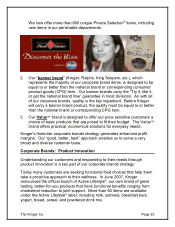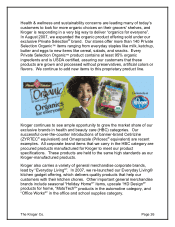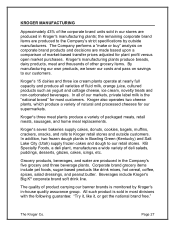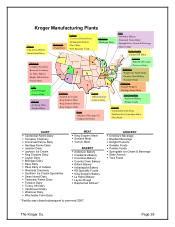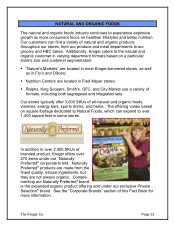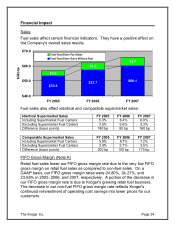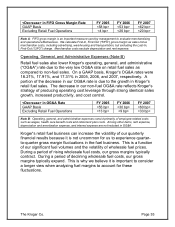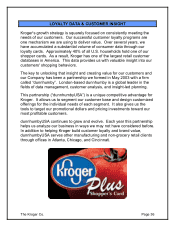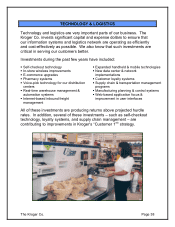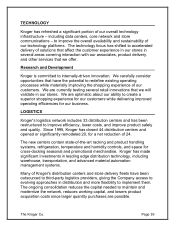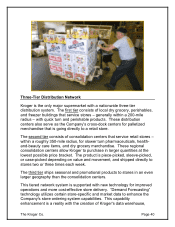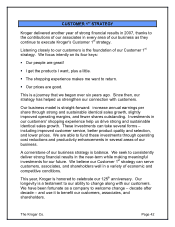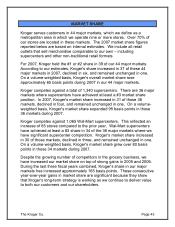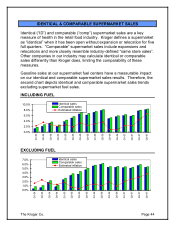Kroger 2007 Annual Report Download - page 35
Download and view the complete annual report
Please find page 35 of the 2007 Kroger annual report below. You can navigate through the pages in the report by either clicking on the pages listed below, or by using the keyword search tool below to find specific information within the annual report.
<Decrease> in FIFO Gross Margin Rate FY 2005 FY 2006 FY 2007
GAAP Basis <58 bp> <53 bp> <62 bp>
Excluding Retail Fuel Operations <4 bp> <26 bp> <20 bp>
Note A: FIFO gross margin is an important measure used by management to evaluate merchandising
and operational effectiveness. We calculate First-In, First-Out (“FIFO”) gross margin as sales minus
merchandise costs, including advertising, warehousing and transportation, but excluding the Last-In,
First-Out (“LIFO”) charge. Merchandise costs exclude depreciation and rent expense.
Operating, General, and Administrative Expenses (Note B)
Retail fuel sales also lower Kroger’s operating, general, and administrative
(“OG&A”) rate due to the very low OG&A rate on retail fuel sales as
compared to non-fuel sales. On a GAAP basis, Kroger’s OG&A rates were
18.21%, 17.91%, and 17.31% in 2005, 2006, and 2007, respectively. A
portion of the decrease in our OG&A rate is due to the growth in Kroger’s
retail fuel sales. The decrease in our non-fuel OG&A rate reflects Kroger’s
strategy of producing operating cost leverage through strong identical sales
growth, increased productivity, and cost control.
<Decrease> in OG&A Rate FY 2005 FY 2006 FY 2007
GAAP Basis <55 bp> <30 bp> <60 bp>
Excluding Retail Fuel Operations <13 bp> <9 bp> <33 bp>
Note B: Operating, general, and administrative expenses consist primarily of employee-related costs
such as wages, health care benefit costs and retirement plan costs. Among other items, rent expense,
depreciation and amortization expense, and interest expense are not included in OG&A.
Kroger’s retail fuel business can increase the volatility of our quarterly
financial results because it is not uncommon for us to experience quarter-
to-quarter gross margin fluctuations in the fuel business. This is a function
of our significant fuel volumes and the volatility of wholesale fuel prices.
During a period of rising wholesale fuel costs, our gross margins typically
contract. During a period of declining wholesale fuel costs, our gross
margins typically expand. This is why we believe it is important to consider
a longer view when analyzing fuel margins to account for these
fluctuations.
The Kroger Co. Page 35


